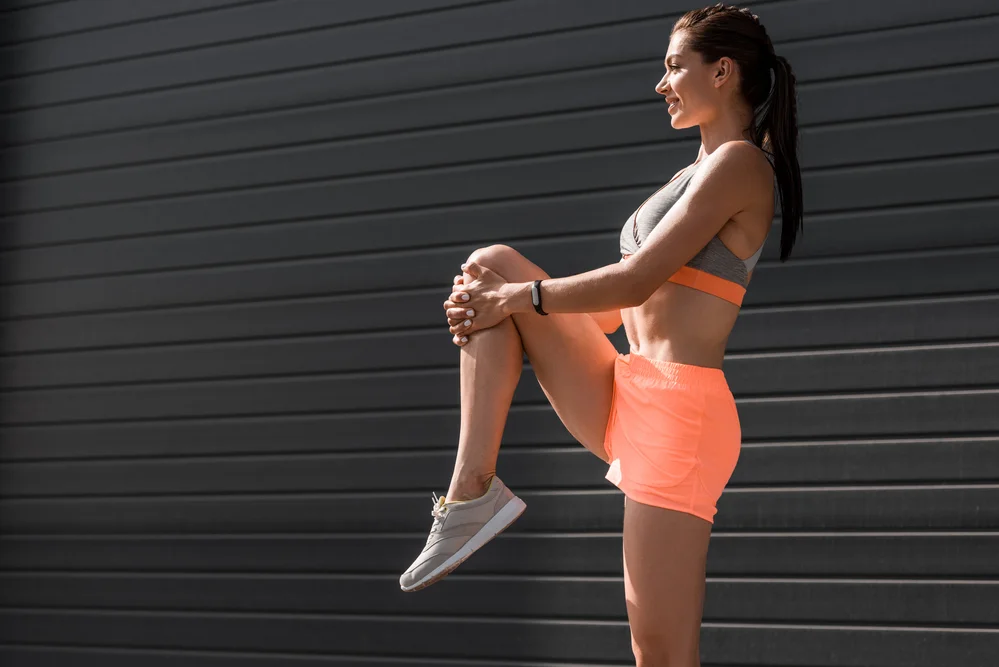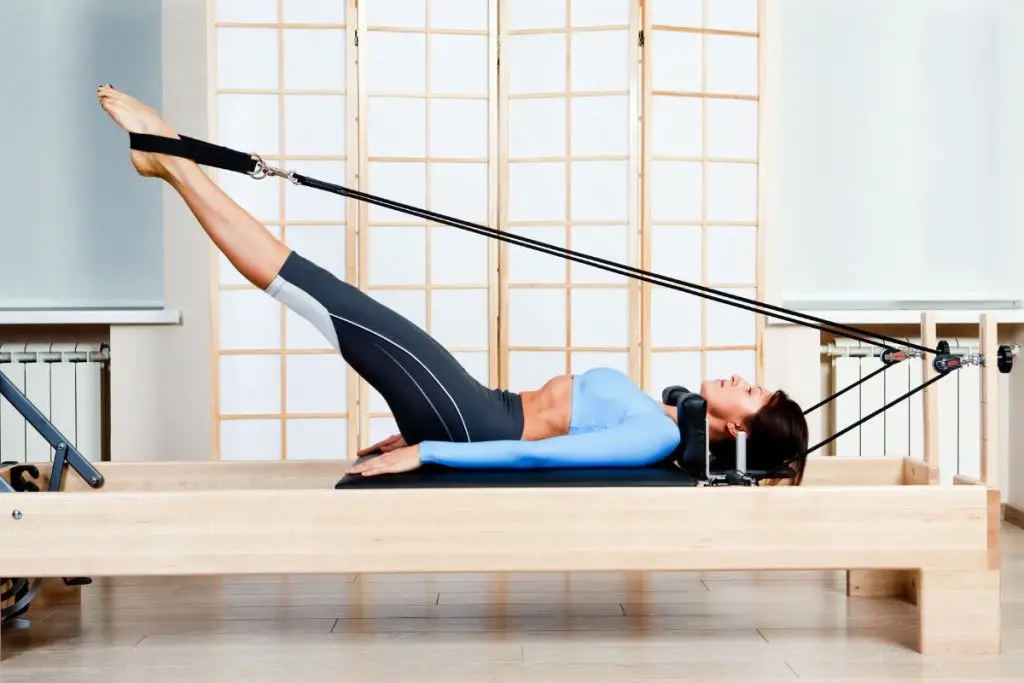Exercise

Have you heard that you shouldn’t lock your knees in Pilates and want to know if that’s true or not? Maybe you have seen others lock their knees in Pilates classes or videos and want to know if that is the correct positioning?
Or are you curious and want to know more? No matter what your question is, we are here with the answers for you!
Knowing if you should lock your knees or not in Pilates can be tricky. After all, there are so many instructors and so-called experts out there offering advice. A simple search online can offer you hundreds of different opinions, leaving you frustrated and overwhelmed.
Disappointed, you start to wonder if you will ever know if you should lock your knees in Pilates.
Well, no more! Today, we are here with the answers you need. Keep reading to find out if you should lock your knees in Pilates and the correct positioning for your knees. We have all the information you need coming up!
Should I Lock My Knees In Pilates?
Let’s dive straight into it! You should not lock your knees in Pilates! Instead, your knees should be straight. This positioning keeps your legs nimble and ready for moves and stretching, without the risk of injury.
When it comes to keeping your knees straight and not locked, there are two categories that people tend to fall into. Let’s take a quick look at them now.
Hypermobile
The first is hypermobile. This is when the ligaments around your knees are long and lax. These lax ligaments won’t do the best job of stabilizing your joints.
A good way to tell if you are hypermobile is if you can touch the floor easily with your hands in a standing or bent forwards position.
When standing for long periods. Hypermobile people tend to lock their knees. This puts your knees into a pseudo-stabile position. The two bones that form the knee will press together and lean against the ligaments.
If you do this for a few hours, your knee joint will start to feel painful or uncomfortable. You might find yourself complaining that your knees feel tired.
For our legs to be a stable foundation and support any upper body movement, they need to be actively engaged.
Locking your knees turns off the muscles around your knee joint. Not only is this painful, but it can lead to reduced blood flow to the heart which could cause you to faint!
Athletic, But Neglects Stretching
The opposite side to hypermobile is athletes like runners, cyclists, or anyone that spends the majority of their days sitting.
This can cause the muscles on the back of your legs to shorten, which pulls your thigh and lower leg bones together, bending the knee.
If you don’t spend time lengthening your legs (through stretching), you can lose the ability to fully straighten or extend your knees!
This can leave you with long-term issues, so make sure you use those knee muscles before you lose them!
How To Find The Correct Position For Your Knees

Now that we have established that your knees should not be locked in Pilates, let’s look at how you can find the correct position for your knees. We have a step-by-step guide below for you to follow to get the positioning perfect!
Remember, if you struggle with your positioning, it’s best to head to a local Pilates class and have the instructor help you find the right and comfortable position for your body.
Step 1 – Lock Knees
To start, lock your knees. Do this by pushing your knees back as far as they go. If your knees like to hyperextend, this will feel normal. For others, it will feel uncomfortable, especially if your knees are always bent!
Use a mirror to check that you have done this correctly. You want your leg to have a slight backward curve.
Step 2 – Bend Knees
Once locked, we need to reverse the move! Bend your knee slightly, just enough so you can feel that they are bent. This should feel like your leg has a forward curve.
Step 3 – Straighten
After the first two steps, we need to find a position that is in between them. Your knees should not feel bent forwards or backward.
Instead, you want them to be straight but not locked. There is a chance that here, your legs won’t feel the most stable.
If you are struggling to straighten your knees, you can try the following exercise!
Lock your knees and think of pushing the calf muscle against the shin bone. You can also imagine someone is pushing against your calf from behind you with a good deal of power. You will be fighting back from this power by stabilizing your lower leg.
Doing so should help you straighten your knees. You will also feel the muscles in your lower leg engage as you do this!
It Can Feel Right, Even When It’s Wrong
Now that we have shown you how to straighten your legs, it’s worth touching on a few points. The correct alignment might not always feel correct when you first try it. What we usually do, what is natural to us, will feel right, even when it isn’t!
Locking your knees might have become second nature, so unlocking them and straightening your leg will feel wrong and unnatural at first, even though it isn’t! You will want to keep practicing to overcome this and ensure that you are standing correctly.
If you are struggling with the correct positioning, why not speak to your Pilates instructor? They can recommend some exercises that will help you practice straightening your legs to prevent your knees from locking.
If you ask for help during a class too, they can provide hands-on help that will guide your body into the correct position.
Exercises For Hyperextended Knees
To help those with hyperextended knees, we have some exercises that can help you! Although they won’t fix your problems overnight, they are a fantastic way to strengthen your leg muscles and ligaments around the knees.
- Back Control and Leg Pull
- Bridging on the Reformer
- Bridging with your feet on a stability ball or foam roller
- Double Leg Kicks
- Hamstring Curls with Ankle Weights
- Hamstring Curls with Magic Circle
- Hamstring Curls on the Reformer
- Single Leg Kicks
You can find video tutorials for these exercises online, or you can head to a Pilates class for some guidance on how to perform these! Alternatively, a personal trainer can offer you the assistance you need with these movements.
Don’t try any of these on your own if you have knee or leg injuries. Instead, let a professional modify the move to suit you.
Exercises For Bent Knees
If you suffer from bent knees and struggle to straighten them, we have a few exercises that can help you! These will all help you lengthen your hamstrings. You must do this to prevent your muscles from being permanently shortened!
- Ballet Stretch – Hamstrings on the Ladder Barrel
- Single Leg Footwork on the Trapeze Table/Tower
- Standing Hip Stretch on the Reformer
- 3-Way Stretch on the Reformer
- 3-Way Stretch with a magic circle or yoga belt
Don’t forget to head online to check out some tutorials showing you how to perform these moves. You can also ask a Pilates instructor at a class to walk you through them, or enlist the help of a personal trainer.
Make sure you make them aware of any injuries you might have so they can modify the move to suit you.
Final Thoughts
And there you have it! You should not lock your knees in Pilates! Instead, you should keep them straight and actively engaged.
Don’t forget to follow our step-by-step guide to do this and to seek advice or assistance from an expert where needed.
Good luck!




